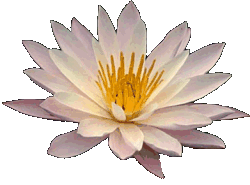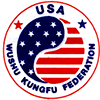Proud
Member
of USAWKF
of USAWKF
The Sutra of the Lotus Flower of the Wonderful Law |
|
|
The Lotus Sutra is one of the most important texts in Buddhism and is considered by many as its finest gem. This text is one of the most famous scriptures of Mahayana Buddhism. It is the second of three sutras. The entire work is called The Threefold Lotus Sutra. The three titles are: The Sutra of Innumerable Meanings, The Sutra of the Lotus Flower of the Wonderful Law and The Sutra of Meditation on the Bodhisattva Universal Virtue. The work presented here is the second and most popular sutra of the three, as translated by H. Kern in 1884. Until recently, all three sutras were not available in English until Kosei Publishing made all three available in one book. The Threefold Lotus Sutra.
The defining doctrine of Mahayana Buddhism is the belief that all people can reach an enlightened state. This idea is in sharp contrast with the Theravada belief that enlightenment is reserved for a select few scholars and monks. Since Mahayana Buddhism is dedicated to the ideal of having all beings someday achieve Buddhahood, it is called The Greater vehicle. Another defining characteristic is the Bodhisattva, or teacher, who is a soul who has already reached enlightenment, but chooses to postpone their ascension into Nirvana in order to teach others. What is striking about the Lotus Sutra and Mahayana Buddhism is its emphasis on devotion and faith. This is missing from Theravada Buddhism for it stresses meditation and austerities. The Lotus Sutra was originally written in Sanskrit. In Sanskrit, the name of the Lotus Sutra is "Saddharma Pundarika Sutra". It was translated several times into Chinese in the 3rd-5th centuries A.D. The most revered of these translations is by Kumarajiva who died in the early 5th century A.D. Almost all English translations of the Lotus Sutra are based on Kumarajiva's translation, as is this one. Another
reason this sutra is so important, is because of its role in the
establishment of a school of Buddhism call Nichiren. In the mid-13th
century, a Japanese monk named Nichiren founded a school of Buddhism
based upon the Lotus Sutra. His teaching was very controversial,
because he insisted on excluding all Buddhist practices except devotion
to the Lotus Sutra. He founded a sect called Hokkekyo-shu (Dharma-Flower-Sutra
Sect). This Quantum Life Buddhism is based on the lineage of Nichiren and those
scholars who dedicated their lives to the correct transmission of the Buddha's actual
teachings. |
|















